MAI Apartment is a bold experiment of the owner as well as the design team, when transforming the previous basic two-story apartment into a place to preserve "the nostalgia" of Saigon. It is known that the owner of the apartment likes modern architectural style, with the way of transforming space and shape, applying Western style to the tropical environment in Vietnam and cleverly combining with native materials.
Modern architecture was introduced to South Vietnam in the mid-20th century. The popular construction materials of modern buildings in the US such as terrazzo and cement became the trendy trend in Saigon at that time. As such buildings were gradually disappearing over time, both the homeowner and the designer wanted to preserve something of Saigon in their apartment.

The main material of the apartment is terrazzo, evoking a smooth and cool feeling.
Terrazzo was chosen as the main material, which is also the origin of the apartment's name.
"For me, terrazzo is an embodiment of Saigon," the apartment owner shared when talking about the modern architectural inspiration more than 50 years ago.

MAI is a basic 2-storey apartment building in District 2, Ho Chi Minh City.
Looking at the overview, we can see the unique terrazzo pattern dotted throughout the apartment such as the floor, hallway, kitchen, stairs. In particular, a large terrazzo slab in a neutral tone with smaller, finer specks is also used as the wall of one of the bathrooms.

The polished stone slab with small, smooth spots creates a luxurious, sophisticated space for the bathroom.
Instead of gravel, cobblestone or crushed stone like in the 50s and 60s, the terrazzo section that extends from the kitchen to the bottom of the stairs uses large, beveled white marble slabs and is carefully arranged like an abstract painting. To create these details, the craftsman must be extremely meticulous in cutting, grinding and arranging each stone, just like a real craftsman.
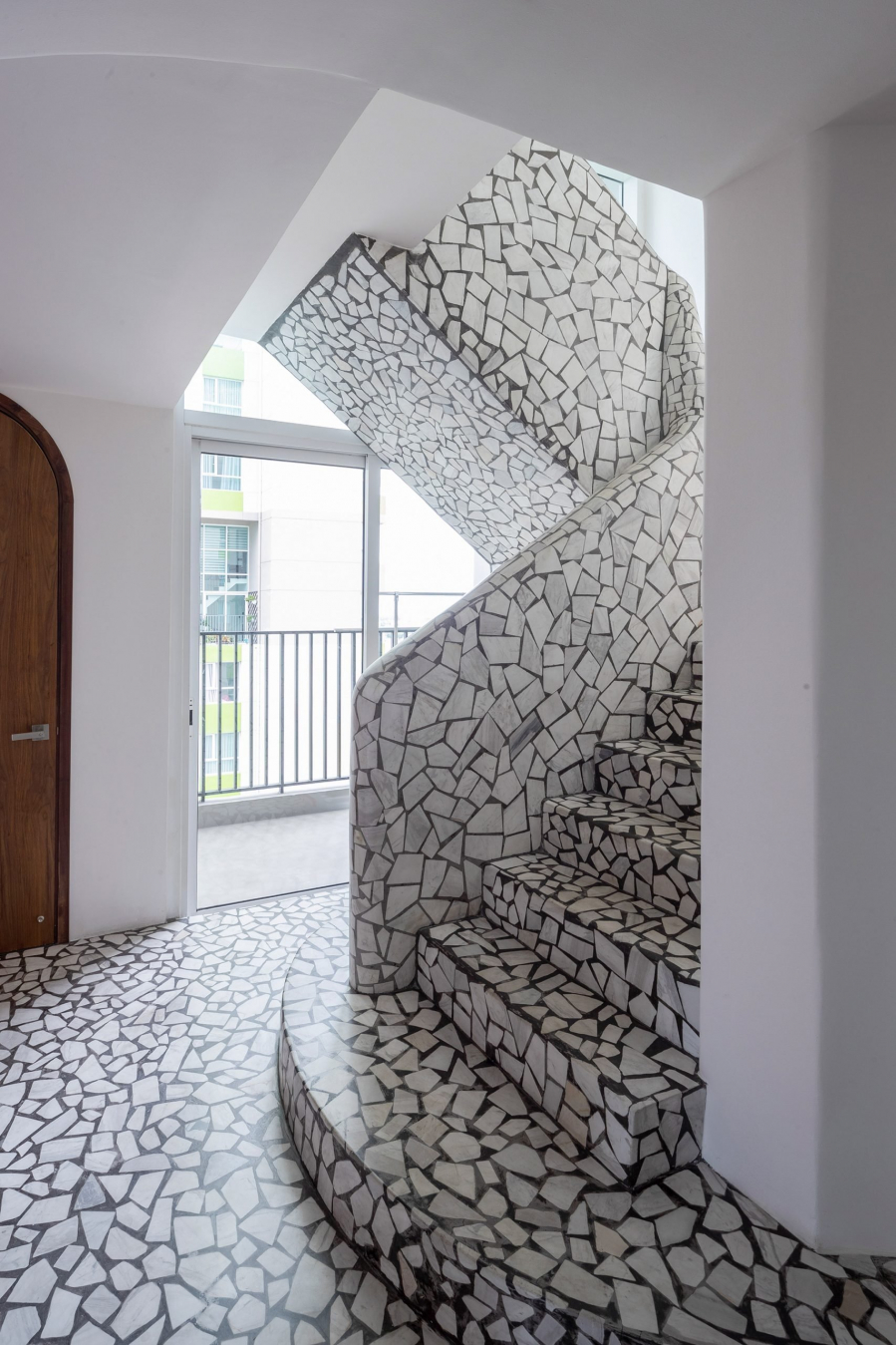
The polished stone panels are meticulously arranged like an abstract painting.
One difficult point when designing MAI is the inability to adjust the main structure of the 200 m2 apartment.2. This is also the immutable principle for today's apartment buildings. The design team has cleverly used shapes and furniture to allocate living space reasonably.
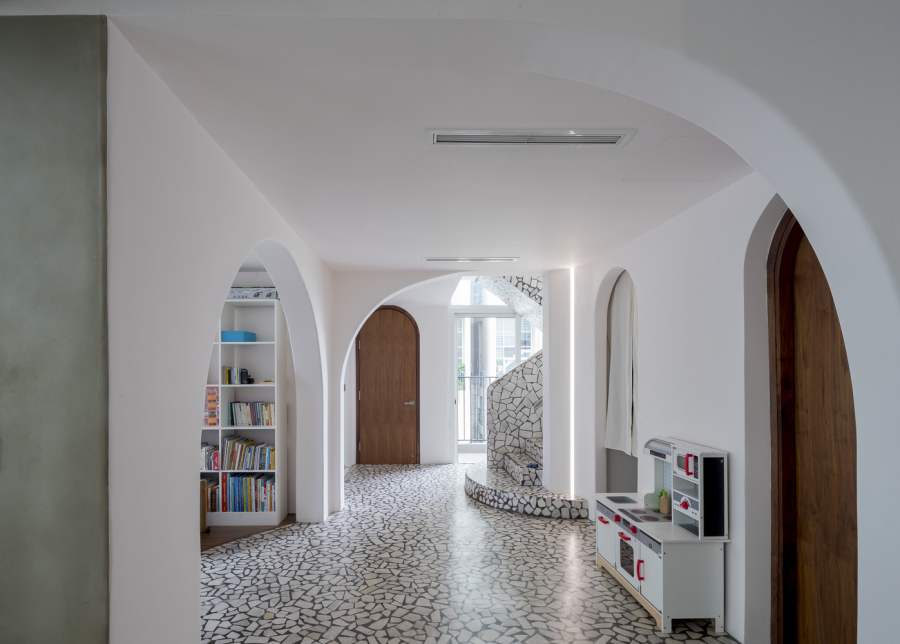
Living space is reasonably allocated.
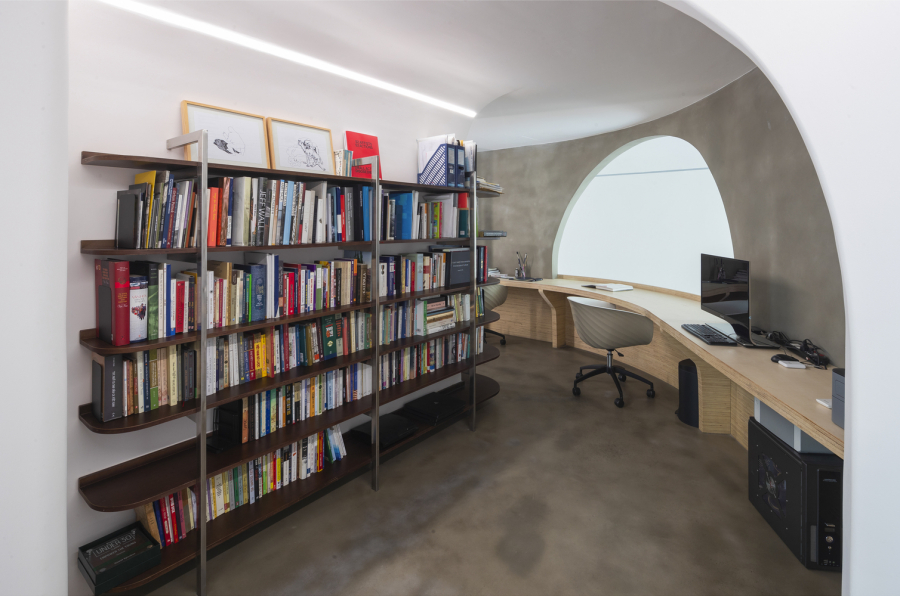
Working and reading area on the 2nd floor.

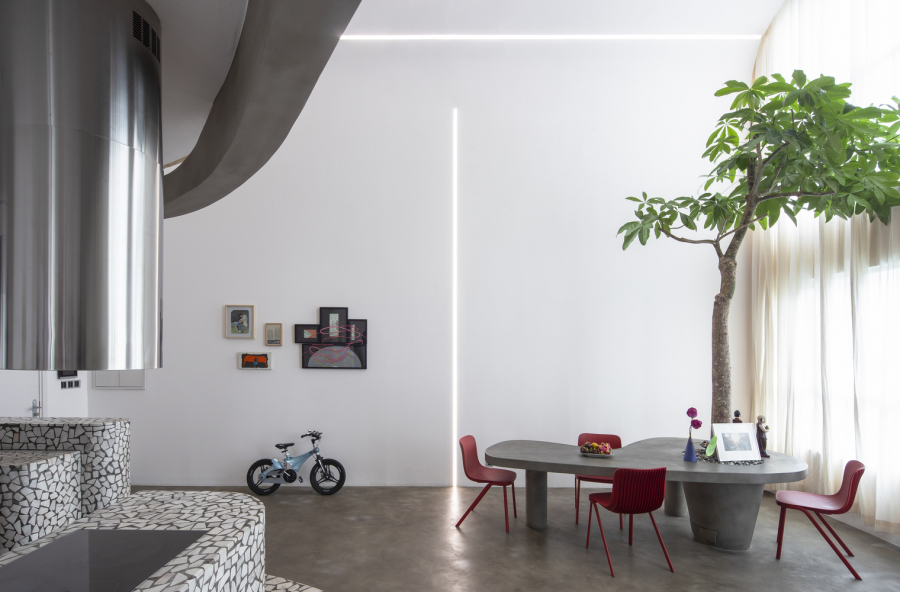
Besides the appearance, the architects also hope to improve the quality of life of residents through design.
Not just the appearance, the architects wanted to experiment how modern design rules could improve the quality of life for residents, especially households living in apartments in crowded cities like Saigon and Hanoi.
That is why in MAI design, they use round holes as a large window, connecting the working space above with the living room below, both in terms of sound and light. However, a curtain can be pulled out when the two spaces need to be separated.

The curved patterns are clearly emphasized.
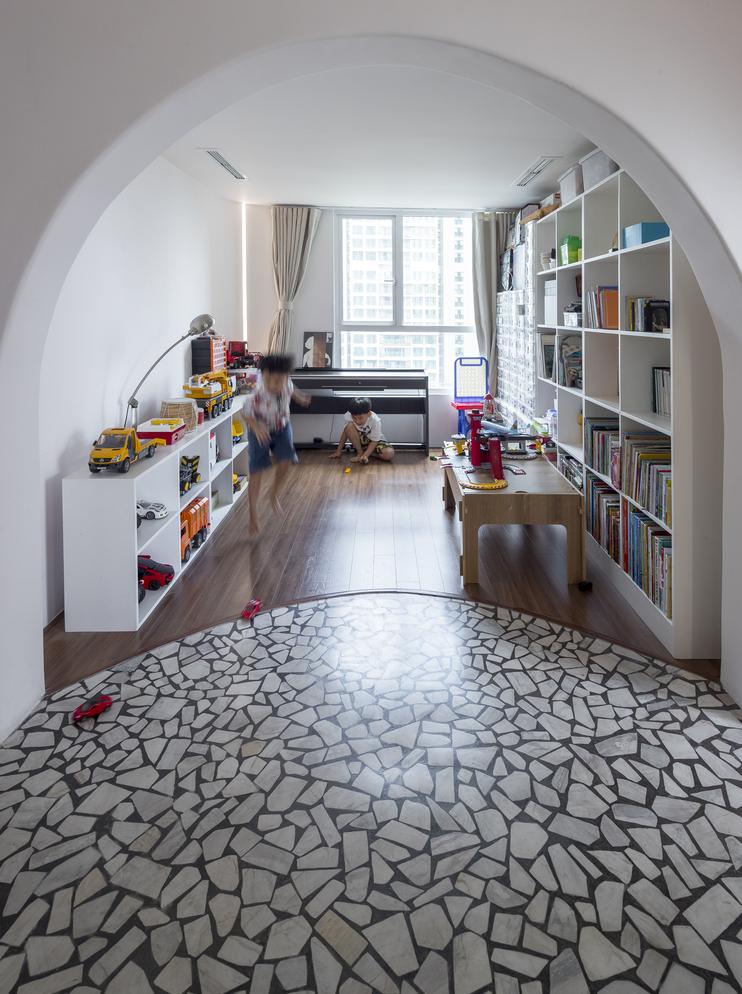
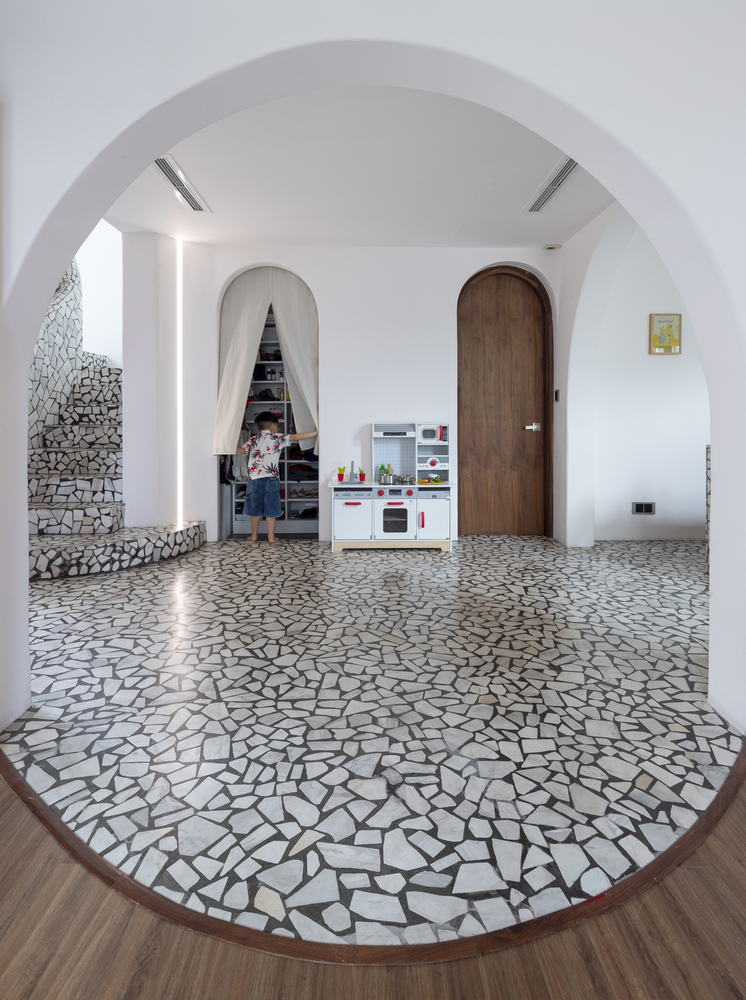

Open space connects the upper office and the reception area below.
Soft curves encircle the apartment, connecting with each other through rounded corners, arches and doors. Streaks of light, the entire space is covered with terrazzo with geometric shapes, giving the apartment a simple yet relaxing and modern look.
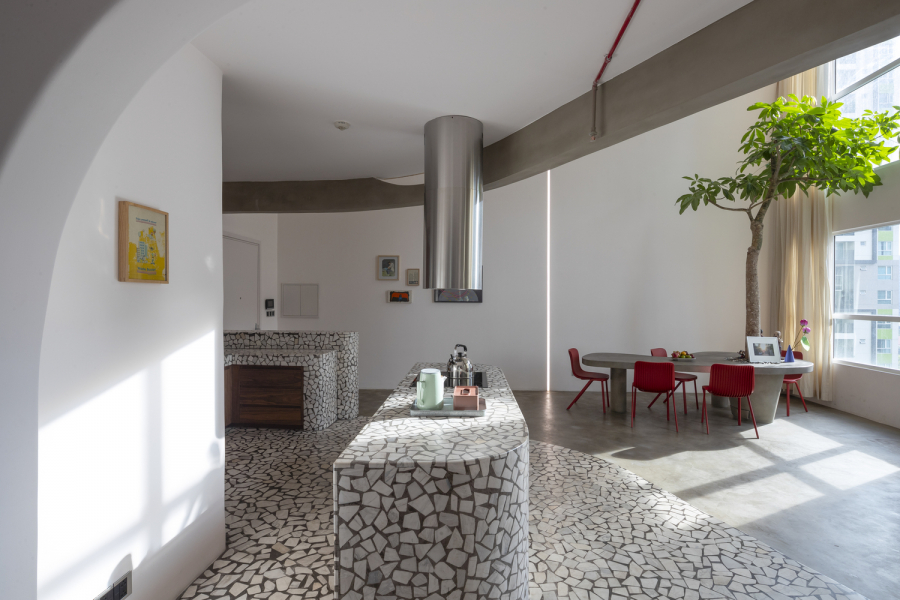
Natural light reflects off the polished stone.
The apartment architect said that MAI is also a reminder of the legendary American architect Louis Kahn, a master of using light and shapes in architecture. His creations were the inspiration for them to create MAI.
Because of its uniqueness and high construction requirements, MAI took nearly three years to complete. The apartment seems to be in contrast to the modern industrialized construction. More importantly, MAI hides within it a contemporary atmosphere mixed with a bit of nostalgia for the modern architecture of Saigon more than 50 years ago.






























